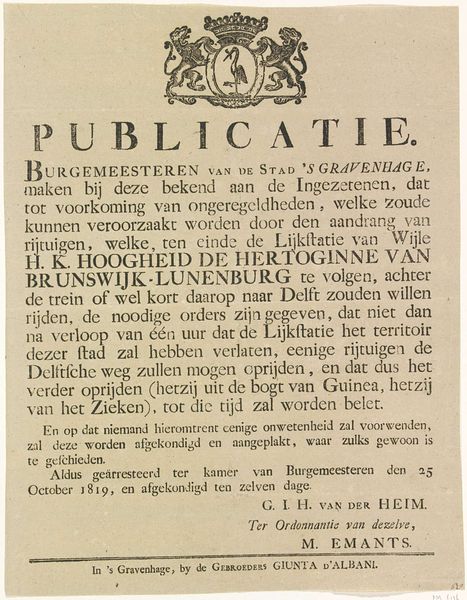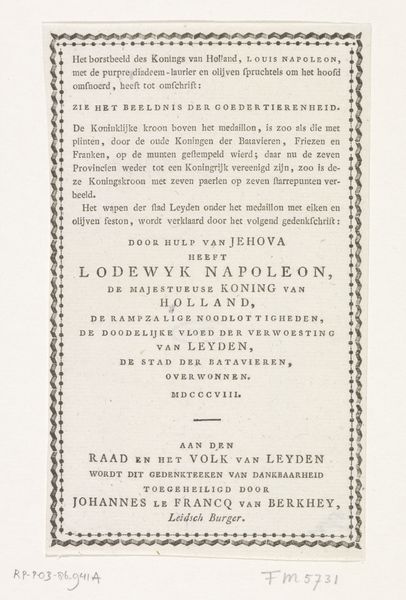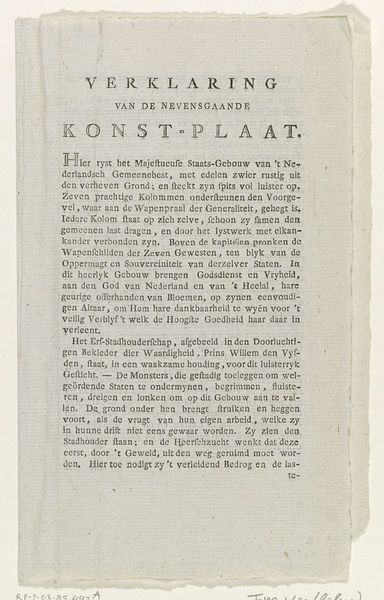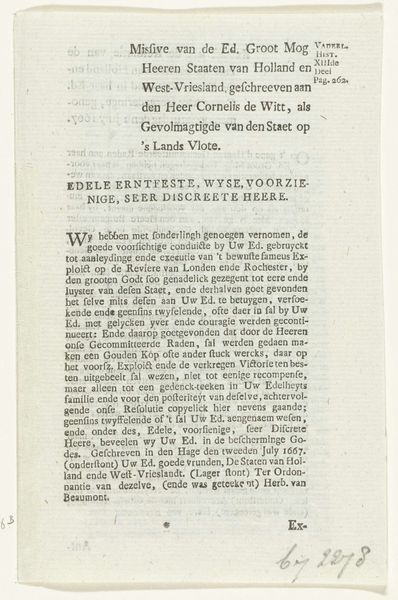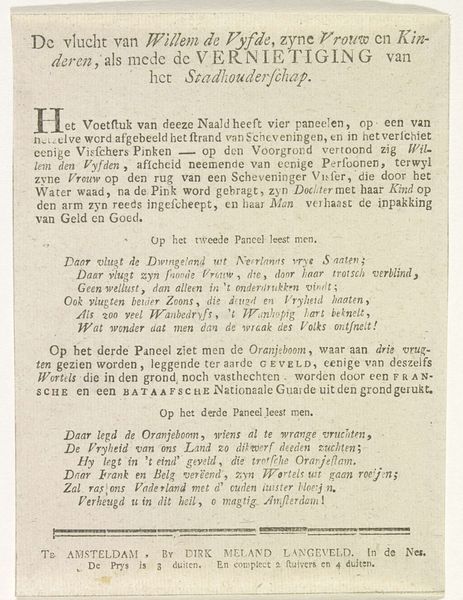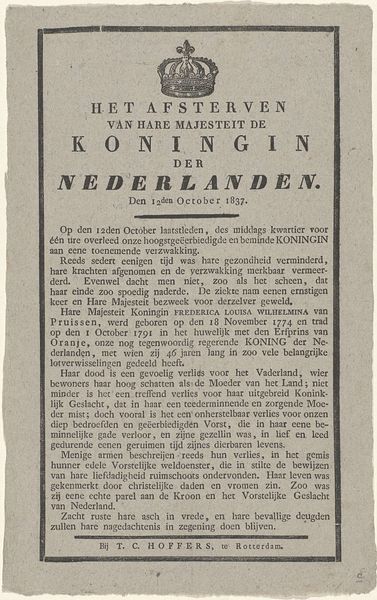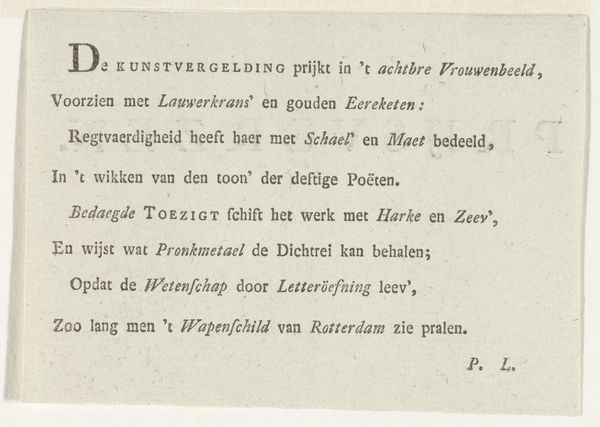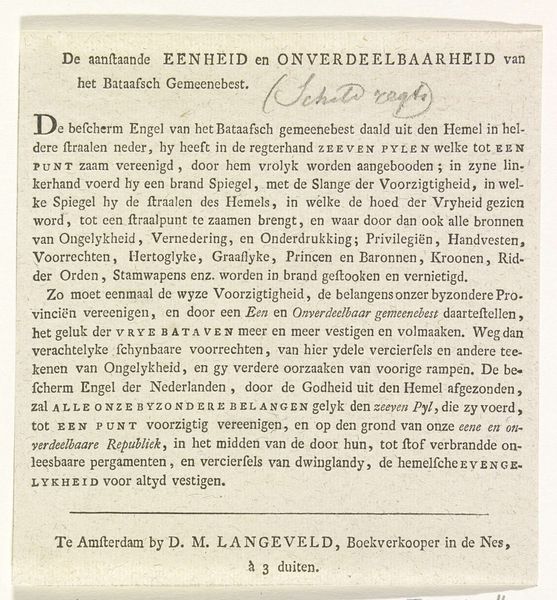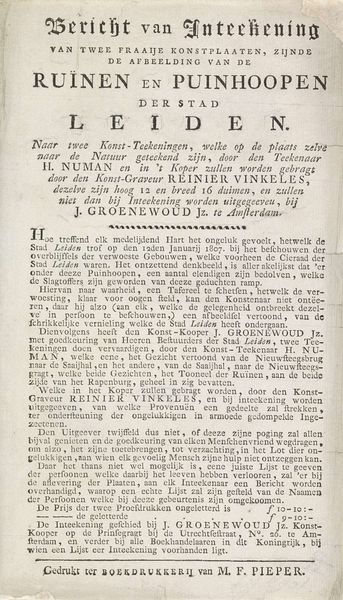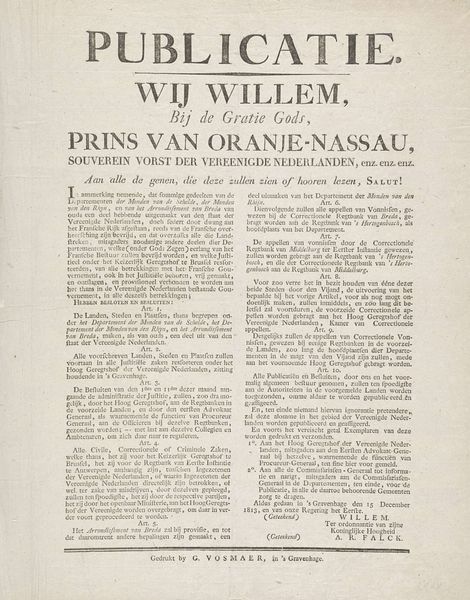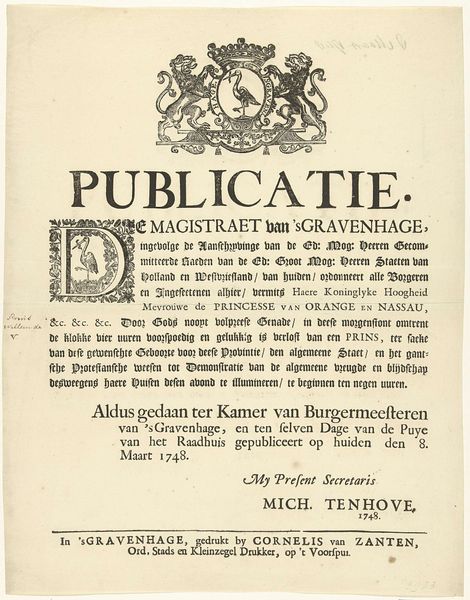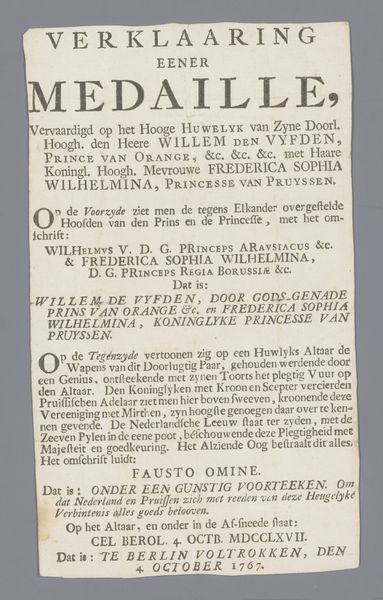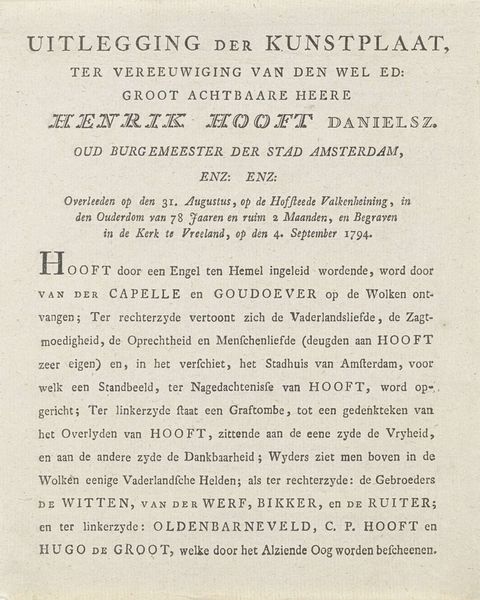
Proclamatie van Willem II, in verband met de abdicatie van zijn vader, 1840 Possibly 1840
0:00
0:00
print, textile, typography, poster
#
neoclacissism
# print
#
textile
#
typography
#
poster
Dimensions: height 575 mm, width 428 mm
Copyright: Rijks Museum: Open Domain
Curator: This print, titled "Proclamatie van Willem II, in verband met de abdicatie van zijn vader, 1840," uses typography as its dominant visual element. Editor: Right, it's from possibly 1840, and it's a poster produced by Algemeene Landsdrukkerij. It feels very formal and authoritative. What do you see in this piece beyond just a historical document? Curator: Beyond the surface, it speaks to the construction of power and identity in the 19th century. How does the language used in the proclamation itself—the phrases "by the grace of God" and "King of the Netherlands"—reinforce a certain understanding of monarchy and its relationship to its people? Consider how the distribution of such printed material in public spaces would have shaped civic discourse. Editor: So, it's not just announcing a change in power, but also actively shaping public perception of that power. It seems that the proclamation and the symbolic nature of its display are closely related. Curator: Precisely. Think about the role of Algemeene Landsdrukkerij. Were they simply printers, or were they actively complicit in constructing a specific image of the monarchy through their craft? This requires a critical look at the social function of printing houses during times of political change and their implication within the wider political context. Also, notice how a Neoclassical approach, emphasizing order and formality, elevates the state while supressing any possible alternative views. What's missing from this picture? Editor: Well, the voices of the people are obviously missing, or any dissent...it’s a one-way announcement. And the means of disseminating it seems geared towards control. Curator: Exactly. That’s an angle from which we can better study and appreciate these artifacts of everyday history. Editor: This reframing helps contextualize the art piece. It isn’t just about aesthetic style or its artistic merits. Curator: Agreed. Analyzing these prints helps reveal dynamics between state power, print culture, and society during a pivotal historical shift. It also lets us examine how such pronouncements influenced identities and fostered a shared sense of belonging to a new state. Editor: I now understand better the role art can have in reflecting social narratives, while concurrently helping to shape cultural and political beliefs.
Comments
No comments
Be the first to comment and join the conversation on the ultimate creative platform.
